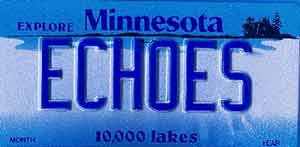
.echoes
.com
A division of ApSCo. Microware
 |
www
.echoes .com A division of ApSCo. Microware |
|
|
|
|
|
|
|
|
|
|
|
|
|
|
|
|
|
|
[Previous entry: "Roger Waters Chicago September 29 2006 ticket arrived"] [Main Index] [Next entry: "Very rare Pink Floyd memorabilia for auction"] 05/08/2006 Entry: "Q&A: Roger Waters revisits Pink Floyd's "Dark Side"" From billboard.com, a nice little chat with Roger Waters. On March 17, 1973, a band in musical transition named Pink Floyd hit the Top 200 chart with the release of its new album, "Dark Side of the Moon." It entered the chart at No. 95, the top debut that week. And then a funny thing happened: It never left. Or almost never, anyway. More than 14 years later -- 736 weeks, to be precise -- in July 1988, it fell off the Billboard 200. Add a later run on that chart and another 759 weeks on the Top Pop Catalog Albums chart, and Pink Floyd this week reaches the staggering plane of 1,500 weeks on the charts. The runner-up for time on the Billboard 200, Bob Marley & the Wailers' "Legend," is several years behind, with a mere 845 weeks under its belt. Former Pink Floyd frontman Roger Waters, who will perform the entire "Dark Side of the Moon" album on his 18-city North American solo tour this fall, talked with Billboard about the album. Q: Why do you think this record has struck such a chord with so many different generations? A: Musically, this thing has really stood the test of time. There was something about the symbiosis of the musical talents of the four of us that worked really well. But also, in terms of the lyrical content, philosophically it holds an appeal to each successive generation because it feels like it gives you permission to question things, maybe, which is something that is very appealing to us as we hit puberty and drift beyond it into real life. Q: Did you feel like you had accomplished your goals in the studio? A: When the record was finished, I took a reel-to-reel copy home with me, and I remember playing it for my wife then, and her bursting into tears when it was finished. And I thought, "This has obviously struck a chord." I was kinda pleased by that. I thought to myself, "Wow, this is a pretty complete piece of work," and I had every confidence that people would respond to it. Q: The imagery is a big part of the album's legacy. A: Storm Thorgerson and Aubrey Powell designed it at Hipgnosis. They came in with like six or seven ideas for album covers and threw them on the floor in the control room, and we all, as one man went, "That one!" There wasn't any conversation. There is just something so cool about it. Q: Did "Dark Side" mark a turning point for Pink Floyd in the studio? A: Yeah. Up until "Dark Side," we were a very cohesive team. We were very much a band, we worked very closely together, and we were content to do that. ("Dark Side") marked a watershed in that after that, (recording) became more and more problematic. With "Dark Side" we had sort of achieved what we'd set out to achieve as young men going into the music business. After that we clung together out of fear more than out of hope. Q: You plan to play the album in its entirety on your upcoming tour. How did that come about?
A: It was a request from Formula I in France. They wanted a big event to go on July 14, the day before the French Grand Prix, at Magny-Course, about 100 kilometers south of Paris. Somebody rather fancifully suggested Pink Floyd playing "Dark Side of the Moon," and somebody else rather fancifully approached various people who said, "Are you f---ing insane? It's not going to happen." So they asked me ... The more I've worked on it, the more the idea has grown on me. I'm going downtown as we speak to work on visuals for "Dark Side of the Moon" and the rest of the show. I've got a great band together, and I have every hope that we will do the work justice.
|